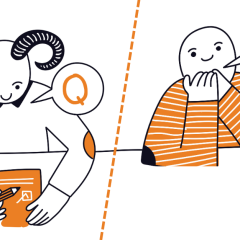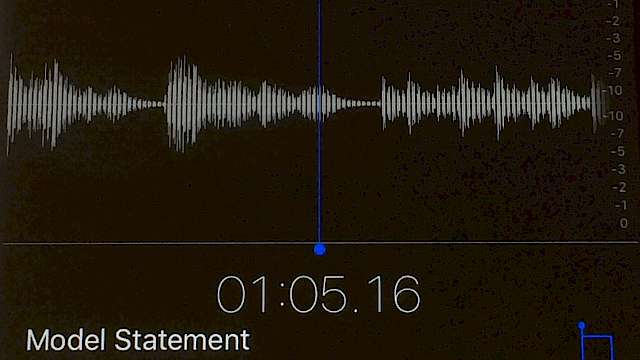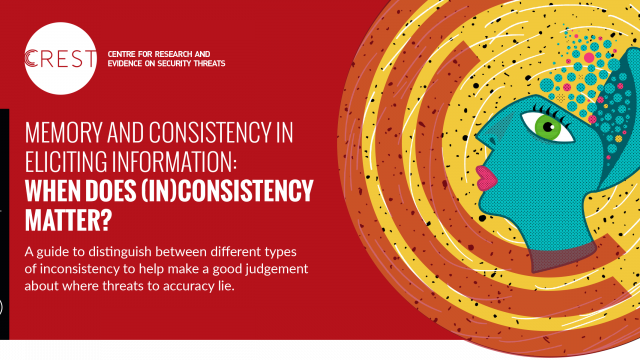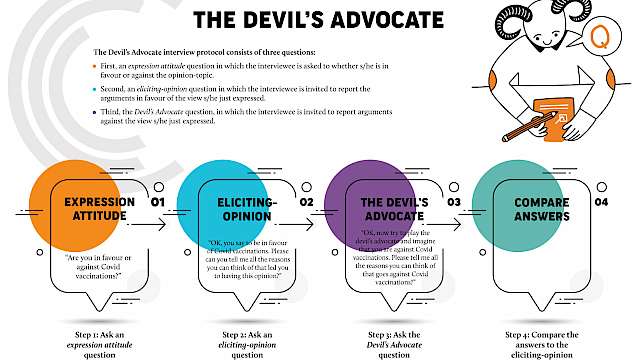Omission lies refer to deliberately not reporting information. They may be difficult to detect, because all the lie teller says could be truthful. Yet, verbal cues emerge when people lie through omitting information. Two interview protocols that have been designed in the last 15 years could be used to detect omission lies:
- The Strategic Use of Evidence (SUE) and;
- Cognitive Credibility Assessment (CCA).
SUE and CCA aim to exploit different strategies truth tellers and lie tellers employ in interviews. Truth tellers are willing to be forthcoming and to tell it all. Lie tellers wish to avoid reporting incriminating facts (facts that gives away that they are lying) and try to keep their stories simple.
...verbal cues emerge when people lie through omitting information.
Strategic Use of Evidence (SUE)
Suppose a source handler possess CCTV footage showing that a source had lunch the day before with someone else. The question is whether this is an innocent lunch (e.g., meeting a relative) or a lunch the source handler should be worried about (e.g., meeting someone from a hostile organisation).
A popular interview style would be to show the source the CCTV footage and ask him who that person is. That is a poor interview style from a lie detection perspective. The difficulty lie tellers face is that they do not know what investigators know about the topic of investigation. They therefore run the risk of presenting information that contradicts the evidence investigators possess. If investigators play open card and tell interviews what evidence they have, lie tellers could tell a story that provides an innocent explanation for this evidence. In a SUE interview, investigators withhold the evidence they possess whilst asking questions about the relevant time-period (“What did you do yesterday”? followed by questions that zoom in on lunch time). Lie tellers’ inclination to avoid presenting incriminating evidence means that they tend to be reluctant to mention that they had lunch in the restaurant. They (i) fabricate details about their activities during the entire day (outright lie); (ii are truthful about their activities but fabricate details about what they did during lunch time (embedded lie); or (iii) report their activities truthfully but just skip one activity: The lunch (omission lie). In any case, their recall contradicts the CCTV footage evidence. Lie tellers’ statements are typically more inconsistent with the evidence than truth tellers’ statements.
Cognitive Credibility Assessment (CCA)
Suppose the topic of interest is not that the source had lunch with someone else, but what is discussed with the other person during that lunch. SUE cannot be used on this occasion because the possible evidence investigators may have (e.g., CCTV-footage) does not reveal what has been discussed. In this scenario -and in all other scenarios where evidence is unavailable- using CCA is the alternative option. Lie tellers’ inclination to avoid reporting incriminating evidence is only relevant in situations where investigators possess evidence. However, lie tellers’ tendency to keep stories simple is relevant in situations where evidence is unavailable. CCA focuses on this strategy. More precisely, it attempts to contrast this strategy with truth tellers’ inclination to tell it all. Truth tellers never spontaneously report all information that they have witnessed in the first recall, for at least four reasons: (i) they do not know how much they are required to say, (ii) they find story-telling difficult, (iii) are not motivated to tell it all, or (iii) find it difficult to retrieve information from memory. CCA includes interview techniques that addresses all four aspects, such as the Model Statement, Ghostwriter Method, introducing a supportive interviewer and asking interviewees to sketch while narrating. This should have a larger effect on interviewees who are forthcoming (truth tellers) than on interviewees who are trying to keep it simple (lie tellers).
Read more
Caso, L., Cavagnis, L., Vrij, A., & Palena, N. (2023). Cues to deception: Can complications, common knowledge details, and self-handicapping strategies discriminate between truths, embedded lies and outright lies in an Italian-speaking sample? Frontiers in Psychology, section Forensic and Legal Psychology, 14: 1128194. Doi: 10.3389/fpsyg.2023.1128194
Dando, C. J., Taylor, P. J., & Sandham, A. L. (2023). Cross-cultural verbal cues to deception: Truths and lies in first and second language forensic interview contexts. Frontiers in Psychology, section Forensic and Legal Psychology, 14, 1152904. Doi: 10.3389/fpsyg.2023.1152904
Leal., S., Vrij, A., Deeb, H., Burkhardt, J., Dabrowna, O., & Fisher, R. P. (2023a). Verbal cues to deceit when lying through omitting information: Examining the effect of a Model Statement interview protocol. The European Journal of Psychology Applied to Legal Context, 15(1), 1-8. https://doi.org/10.5093/ejpalc2023a1
Leal, S., Vrij, A., Deeb, H., & Fisher, R. P. (2023b). Interviewing to detect omission lies. Applied Cognitive Psychology, 37, 26-41. Doi: 10.1002/ACP.4020
Leal, S., Vrij, A., Deeb, H., & Fisher, R. P. (2023c). Verbal cues in omission lies: The effect of informing sources about the essential part of the event. Manuscript submitted for publication.
Leal, S., Vrij, A., Deeb, H., Hudson, C., Capuozzo, P., Fisher, R. P. (2020). Verbal cues to deceit when lying through omitting information. Legal and Criminological Psychology, 25, 278-294. Doi: 10.1111/lcrp.12180
Maier, B.G., Niehaus, S., Wachholz, S., & Volbert, R. (2018). The strategic meaning of CBCA criteria from the perspective of deceivers. Frontiers in Psychology, 9: 855. Doi: 10.3389/fpsyg.2018.00855
Vrij, A., Leal, S., Deeb, H., & Fisher, R. P. (2023). Verbal veracity indicators and the efficacy of countermeasures in three non-WEIRD populations. Journal of Psychology & Behavior Research, 5, (1), 34-63. Doi:10.22158/jpbr.v5n1p34.
Vrij, A., Leal, S., Mann, S., Dalton, G. Jo, E., Shaboltas, A., Khaleeva, M., Granskaya, J., & Houston, K. (2017). Using the Model Statement to elicit information and cues to deceit in interpreter-based interviews. Acta Psychologica, 177, 44-53. Doi: 10.1016/j.actpsy.2017.04.011
Vrij, A., & Vrij, S. (2020). Complications travel: A cross-cultural comparison of the proportion of complication as a verbal cue to deceit. Journal of Investigative Psychology and Offender Profiling, 17, 3-16. Doi: 10.1002/jip.1538
Copyright Information
As part of CREST’s commitment to open access research, this text is available under a Creative Commons BY-NC-SA 4.0 licence. Please refer to our Copyright page for full details.
IMAGE CREDITS: Copyright ©2024 R. Stevens / CREST (CC BY-SA 4.0)






